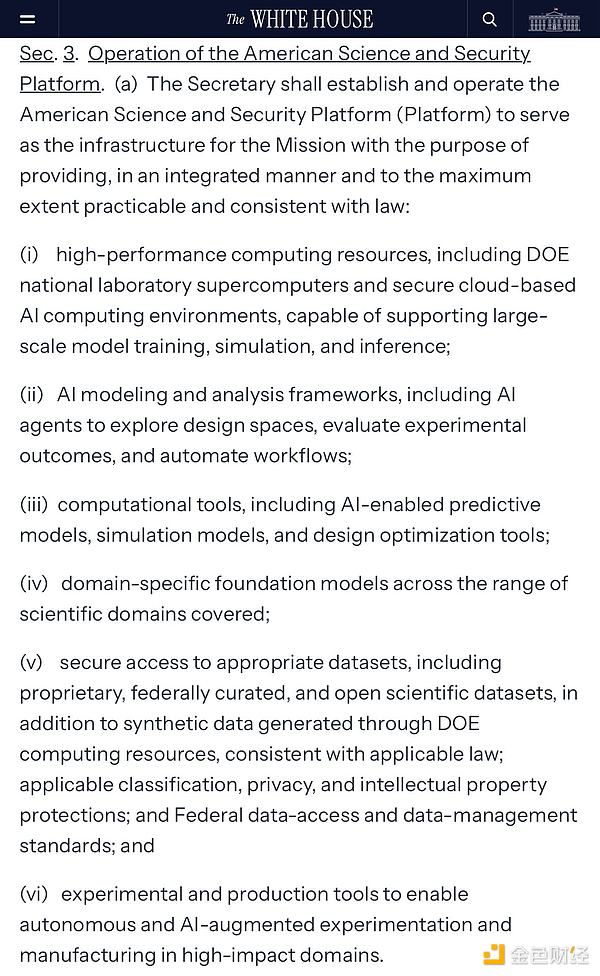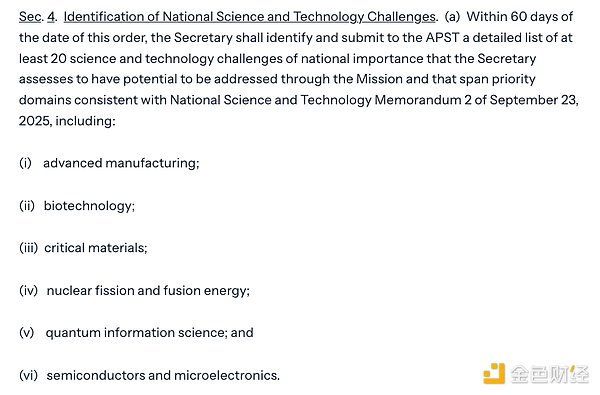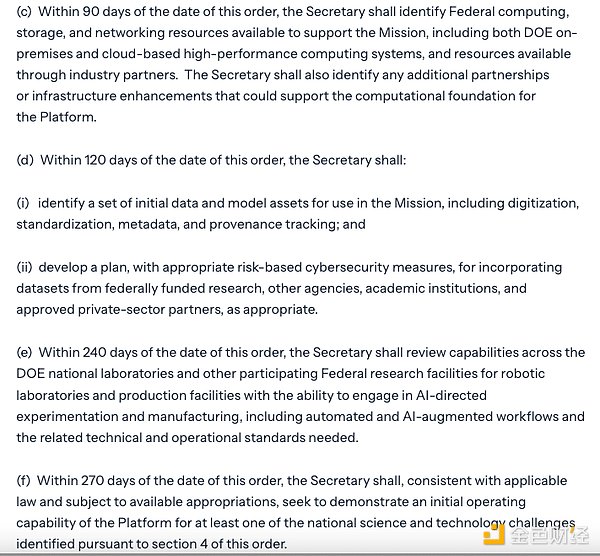Source: Ask Perplexity; Compiled by: Jinse Finance
The White House launched the "Genesis Mission" on November 24—a "Manhattan Project" in the field of AI.

The U.S. Department of Energy will build a national AI platform based on U.S. supercomputers and federal scientific data to train basic scientific models and run AI agents and robotics labs to automate experiments in fields such as biotechnology, critical materials, nuclear fission/fusion, space, quantum mechanics, and semiconductors.
Let's take a closer look at what this plan actually entails and how it will reshape the landscape of AI, energy, and science over the next decade. I. Its core is the new American Science and Security Platform. The Department of Energy has been tasked with transforming the national laboratory system into an integrated platform that provides: High-performance computing (HPC) for large-scale model training, simulation, and inference; Domain-level foundational models covering physics, materials, biology, energy, and other disciplines; AI agents for exploring design spaces, evaluating experiments, and automating workflows; Robotic/automated laboratories and production tools to support AI-guided experimentation and manufacturing; and national-level "AI scientists" and "AI lab technicians" as infrastructure.

II. The objectives are very clear and of great strategic significance
The Department of Energy must submit at least 20 “national challenges” within 60 days, covering the following areas:
Advanced Manufacturing
Biotechnology
Key Materials
Nuclear Fission and Fusion
Quantum Information Science
Semiconductors and Microelectronics

III. The timeline is tight enough to have an impact
60 days → List the challenges
90 days → Complete the full list of federal computing/network/storage for Genesis
120 days → Initial model + data assets, and plans to include more datasets (other institutions, academia, private sector)
240 days → Map all robotics labs and automation facilities in the national laboratory
270 days → Demonstrate initial operational capability on at least one challenge.
Goal: Launch a fully functional scientific AI cycle within 9 months.

IV. A Federal AI Technology Stack Parallel to the Commercial System
This directive requires the Department of Energy (DOE) and the White House Office of Science to:
Integrate the AI technologies of each agency.
Projects and datasets are integrated/aligned to the platform. Joint funding solicitation and award program launched. Partnership framework established with external participants (including joint development agreements, user facilities, data/model sharing, and intellectual property rules). Nvidia, OpenAI, Anthropic, xAI, Google, major cloud service providers, biotechnology, and chip companies are now potential suppliers and joint developers for the Department of Energy's AI system. [Image of image: https://img.jinse.cn/7416661_watermarknone.png] V. Genesis marks a significant shift. To date, cutting-edge artificial intelligence has been primarily dominated by private laboratories. With the launch of the "Genesis" initiative, the United States is clearly building a national AI backbone network serving the fields of science, energy, and security: The Department of Energy (DOE) is responsible for coordinating a national "AI-for-science" platform; national laboratories and supercomputers will be part of a unified AI technology stack; models, agents, and robotics labs are considered strategic infrastructure, not just tools. The questions now are: Who will provide the computing power and models? How will intellectual property (IP) and data be shared? And how quickly will other countries roll out their own "Genesis"-like initiatives?
 Catherine
Catherine







